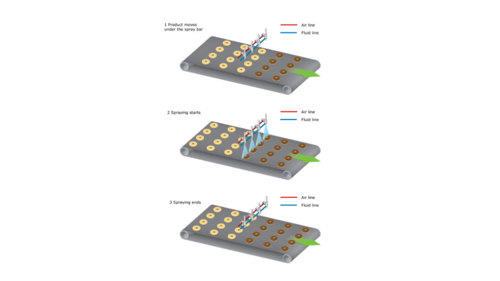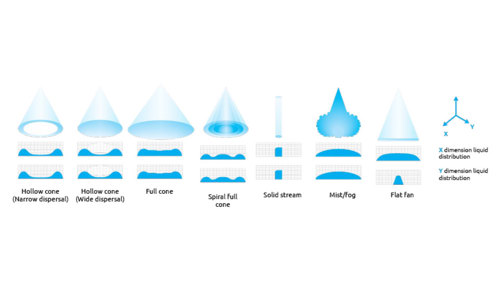This is the sixth of eight articles from our Nozzle Knowledge series in which we look at the basics of spray nozzle systems. Prefer to watch a video version, please click here. Or, if you would like to download a pdf version, click here.
Once the destination of the spray has been established, some variations could still occur in fluid distribution.

Why is this important?
Applications such as coating, for example, need to achieve very even distributions of spray to ensure the coating is consistent.
This is not the case for other applications such as firefighting which requires an uneven distribution of spray; the variable densities of spray within some spray nozzles can help overcome the heat currents and carry more fluid into the fire.
Even and uneven can both be important for certain applications. But for some, it's not important at all.
What affects fluid distribution?
What affects the fluid distribution within a spray pattern? Essentially, it’s all down to nozzle design and the narrower the spray angle is, the more even the fluid distribution will be.
Here is an example of the fluid density distributions of various spray patterns in two dimensions, (looking face on to the nozzle).

Running through each:
Hollow cone nozzles have either a wide or narrow dispersal design.
Full cone nozzles tend to naturally have some additional concentration of fluid at the edges and this amount will vary depending on the design of the nozzle.
Spiral cone nozzles will have considerably more variation in concentration. This variation is rippled throughout the circular spray pattern due to the concentric, overlapping hollow cone patterns that form the uneven spray pattern.
This nozzle type is not suitable for applications that require an even coverage, such as coating.
They are, however, ideal for the fire suppression application because the bands of high density carry the fluid into the fire.












Pipebots Transforming Water Pipe Leak Detection and Repair
Fantastic application.